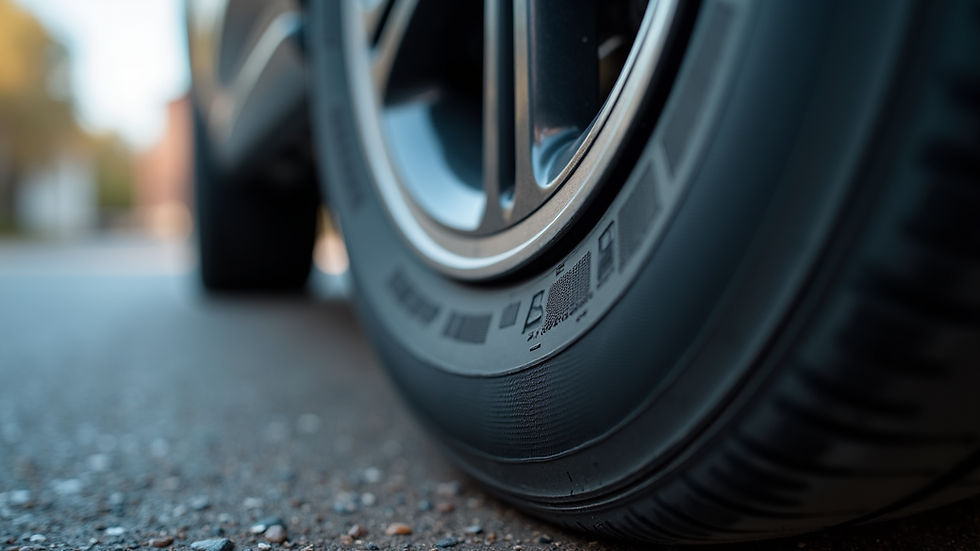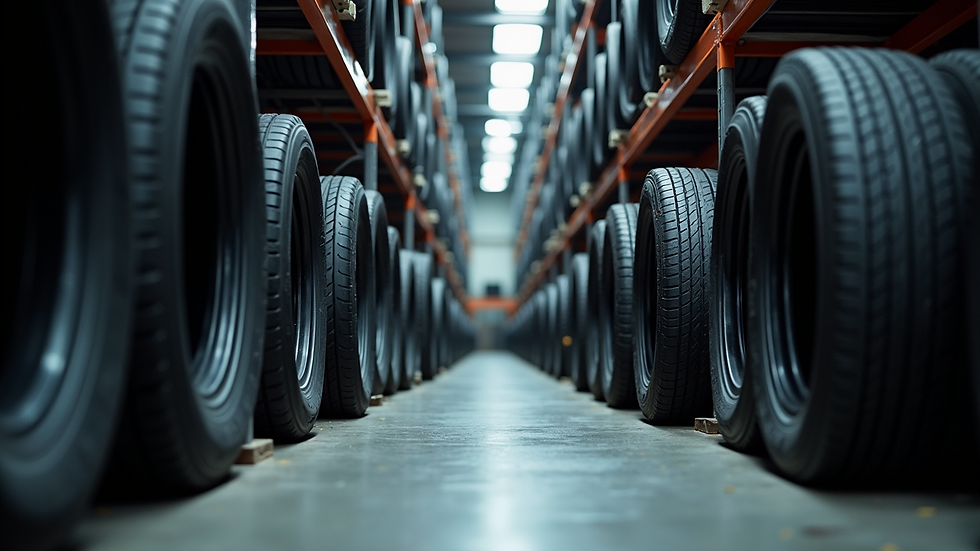Decoding Used and New Tires for Your Vehicle
- admin40938
- 9 hours ago
- 4 min read
When it comes to outfitting your fleet or logistics vehicles with tires, the choice between new and used options can feel overwhelming. How do you know which tires will deliver the best value, safety, and performance? As someone deeply involved in the tire wholesale industry, I’ve seen firsthand how understanding tire quality comparison can transform your purchasing decisions. Let’s break down the essentials so you can confidently select the right tires for your business needs.
Understanding Tire Quality Comparison: What Really Matters?
Tire quality comparison is more than just looking at price tags or brand names. It’s about evaluating several key factors that impact durability, safety, and cost-effectiveness. Here’s what I focus on when comparing tires:
Tread Depth and Wear: The deeper the tread, the longer the tire will last. New tires typically come with a tread depth of 10/32” to 12/32”. Used tires vary widely, so measuring tread depth is crucial.
Rubber Composition: Quality tires use advanced rubber compounds that resist wear and improve grip. Cheaper tires may use inferior materials that degrade faster.
Manufacturing Standards: Tires made under strict quality controls tend to perform better and last longer. Look for certifications like DOT (Department of Transportation) approval.
Age of the Tire: Tires degrade over time, even if unused. A tire older than 6 years may not be safe, regardless of tread depth.
Brand Reputation: Established brands often invest more in research and quality assurance, but some lesser-known brands can offer great value if vetted properly.
By focusing on these factors, you can make a more informed tire quality comparison that balances cost and performance.

New Tires vs. Used Tires: What Are the Pros and Cons?
Choosing between new and used tires depends on your budget, vehicle usage, and safety requirements. Let’s explore the advantages and disadvantages of each:
New Tires
Pros:
Maximum tread depth and lifespan
Latest technology in rubber compounds and tread design
Full manufacturer warranty and support
Better fuel efficiency and handling
Cons:
Higher upfront cost
Longer lead times for bulk orders sometimes
Used Tires
Pros:
Lower initial cost, ideal for tight budgets
Immediate availability, especially for bulk purchases
Can be a sustainable choice by extending tire life
Cons:
Variable tread depth and wear patterns
Potential hidden damage or repairs
Limited or no warranty
Shorter remaining lifespan
When weighing these options, consider your operational priorities. For example, a logistics company with high mileage routes might prioritize new tires for reliability, while a business with seasonal or low-mileage vehicles might find used tires a smart cost-saving option.
If you want to explore a reliable source for both used and new tires, OKELCOR TIRES offers a wide selection tailored for global businesses and wholesalers.

How Much Should You Pay for a Used Tire?
Pricing used tires can be tricky because it depends on several factors. Here’s a practical guide to help you understand what a fair price looks like:
Tread Depth Remaining: Tires with 6/32” or more tread depth command higher prices. Expect to pay about 50% to 70% of the new tire price for these.
Brand and Model: Premium brands retain value better. A used tire from a top brand might cost more than a new tire from a budget brand.
Age and Condition: Tires less than 3 years old and in excellent condition are worth more. Older tires or those with minor repairs should be priced lower.
Market Demand: Bulk buyers can negotiate better rates, especially when purchasing large quantities.
Warranty or Return Policy: Some sellers offer limited warranties on used tires, which can justify a higher price.
For example, if a new tire costs $150, a high-quality used tire with good tread might be priced around $90 to $105. Always inspect tires carefully or request detailed condition reports before buying.

Tips for Inspecting and Selecting Quality Tires in Bulk
When purchasing tires in bulk, especially for commercial fleets, a thorough inspection process is essential. Here are my top tips:
Request Detailed Reports: Ask suppliers for tire history, including age, previous use, and any repairs.
Check for Visible Damage: Look for cracks, bulges, or uneven wear patterns.
Verify Tread Depth: Use a tread depth gauge to ensure tires meet your minimum standards.
Confirm DOT Codes: These codes reveal the manufacturing date and location.
Test Samples: If possible, test a few tires on your vehicles before committing to a large order.
Negotiate Terms: Discuss warranties, return policies, and delivery schedules upfront.
Consider Sustainability: Buying used tires can reduce waste and support a circular economy, aligning with corporate social responsibility goals.
By following these steps, you can confidently build a tire inventory that supports your operational efficiency and budget.
Why Choosing the Right Tire Supplier Matters
Selecting a trusted tire supplier is just as important as choosing the tires themselves. A reliable partner ensures consistent quality, competitive pricing, and dependable delivery. Here’s what I look for in a supplier:
Wide Selection: Access to both new and used tires across various sizes and brands.
Transparent Quality Standards: Clear information on tire condition and certifications.
Competitive Pricing: Fair prices that reflect market conditions and volume discounts.
Strong Logistics Network: Ability to deliver tires promptly worldwide.
Customer Support: Responsive service for inquiries, claims, and technical advice.
OKELCOR TIRES exemplifies these qualities, making them a go-to choice for businesses needing bulk tires. Their commitment to quality and affordability helps companies maintain a steady, sustainable supply chain.
Choosing the right tires is a strategic decision that impacts safety, costs, and operational success. By understanding tire quality comparison and carefully evaluating your options, you can make smart investments that keep your vehicles rolling smoothly. Whether you opt for new or used tires, partnering with a reputable supplier ensures you get the best value every time. Ready to explore your options? Check out used and new tires and take the next step toward smarter tire purchasing today.



Comments